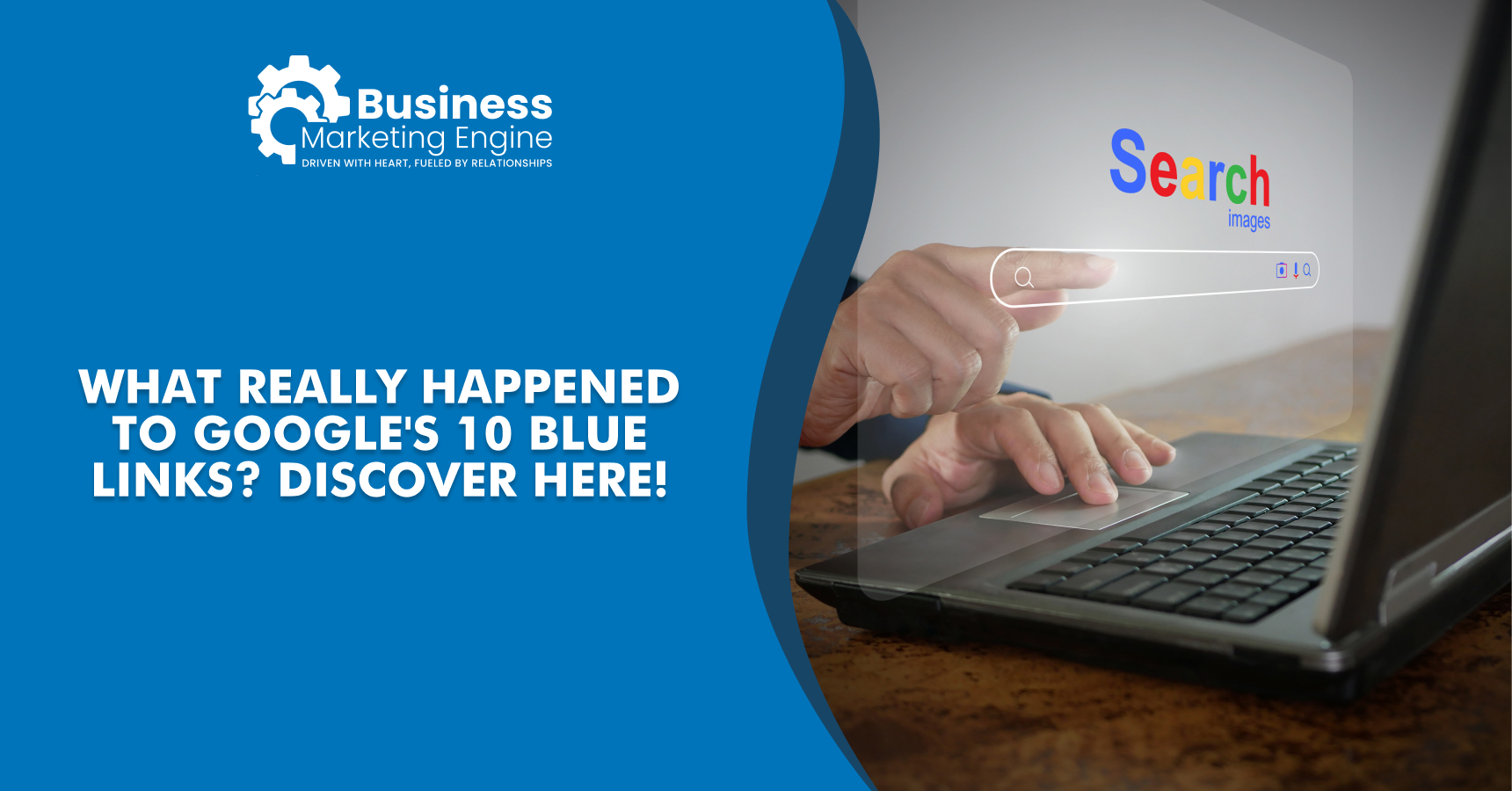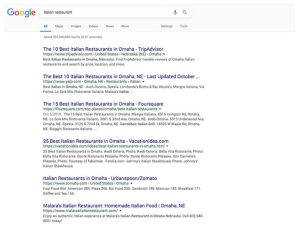If you ask anyone who doesn’t live under a rock, “which is the best search engine?” they would say Google. Among all search engines from ages past, Google stood tall and became humanity’s companion for all queries beath the sun.
Their organic search, otherwise known as “blue links,” serves the answers on a silver platter. But despite Google’s incredible results, the search engine giant has more to improve.
Google knows this fact. Not a fan of “if it ain’t broke, don’t fix it,” they continuously optimize search results for the user’s benefit.
The replacement of the 10 blue links was a big transition Google made to perfect search results. In this article, let’s discuss blue links and what happened to them.
What Exactly are the 10 Blue Links?
The 10 blue links represent Google’s bygone search result interface.
Previously, Google displayed 10 links per page for every search query, defining the top organic search results. In other words, websites that rank on an entry can clearly say their position by viewing results. But this has drastically changed through the years.
The 10 blue links point to destinations that all answer (or seek to add relevant information to) the query. Think of SERPs as a mishmash of links; you’re left to skim each to find your best answer.
At the time, Google’s 10 blue links were the best this world could offer. But in today’s convenience-oriented culture, this system is out of touch. People want answers immediately, and Google delivers them through search results updates.
 Google’s MuM
Google’s MuM
“Our mission is to organize the world’s information and make it universally accessible and useful.”
That is Google’s famous tagline.
In their mission statement, we see three targets:
- Organize the world’s information
- Make the information universally accessible
- Make the information useful
Today, Google’s algorithm does a beautiful job fulfilling these three aspects. But that was not always the case, especially with the 10 blue links.
Through the years, the search engine went through updates seeking to perfect search semantics. Google’s MuM revolutionized search results into what it is today.
For a quick blast from the past, here is a list of updates:
The first significant search query core update was RankBrain. This machine-learning system became the foundational tool to rank search results based on query relevance. Before this, Google used a basic algorithm to show results, which sometimes gave irrelevant results.
The second update sought to maintain Google’s ranking factor but enhance its understanding of semantic rules. Better knowledge of semantics helps Google interpret search queries and understand user intent more. As a result, Google gave better blue links.
Google achieved far greater heights with MuM, described as a thousand times more potent than BERT. MuM is a multimodal algorithm that interprets context beyond a search query. According to Google, it can understand information across texts, images and languages— removing barriers to information.
This ultimately resulted in the Google search result interface we see and love today.
Why “10 blue links” is dead in Google SERP
In light of MuM, search engine results pages are no longer the same. Instead of 10 bare links, we are bombarded with countless other relevant information. For instance, the “japan travel” search query reveals various information related to traveling to Japan.
- Popular destinations featuring places, price per overnight stay
- Google map of Japan
- Some critical information obtained from Wikipedia
- Relevant People Also Ask section
- Tourism websites
- COVID-19 rules regarding traveling to Japan for the U.S. citizens
Google gave a roundabout of relevant details you may want to know before traveling. It revealed hotel rates even without mentioning them in the query. Google also included a link to Japan’s COVID-19 travel rules for tourists.
In other words, instead of an assortment of 10 blue links, Google seeks to give you more value in a single search. That is why blue links are considered dead in today’s era.
Old vs. Current SERP
Looking at old vs. current SERP side by side, we’ll see the significant makeover that Google implemented.
Image credits: Blue Compass
In the first image, we see the conventional blue links result for the query “Italian restaurant.” You get a roundup of listicles about the best Italian restaurants in the locality. To Google’s credit, the query needs more detail to receive concise results. But this is where Google’s MuM shines through.
Modern search interface on “Italian restaurant’ reveals never before seen information:
- Google adds a map that points to the Italian restaurant in the locality.
- You get Google My Business results, which feature location, contact information and reviews.
- Organic search results are more restaurant websites and fewer list-type articles.
Despite its progress, Google still needs to catch up in accomplishing its mission statement. Unfortunately, we are limited by the technology of our time to make Google answer a query precisely in one fell swoop.
Still, the years of continuous updates allowed the search engine giant to leap closer to its objective. Today, the world enjoys an index of valuable, accessible and helpful information, thanks to Google.
The pressing question now is, how exactly do we rank on Google, given MuM?
The answer? Search engine optimization (SEO).
With continuous updates come consistent research on how to crack Google’s ranking algorithm and bag top search engine results. And Business Marketing Engine is one of the frontrunners in SEO.
If you want your business to dominate Google searches, we can help you. Book an appointment, and let’s discuss ranking #1 in SERPs.


 Google’s MuM
Google’s MuM





